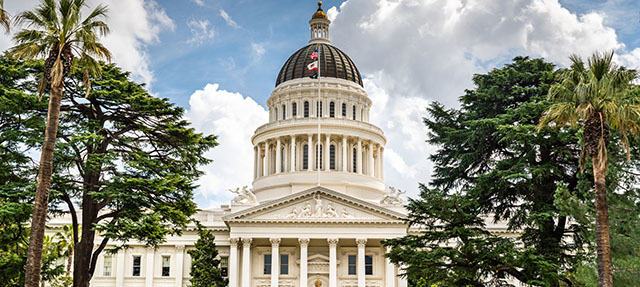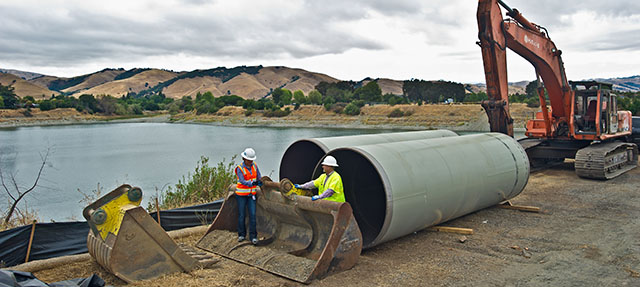The COVID-19 pandemic and related economic turbulence forced the state legislature and Governor Newsom to make tough decisions this year about which issues to prioritize and which to sideline. By the end of September, most plans developed earlier in the year had been put on hold—including significant new funding proposals such as bond proposals to boost climate resilience. Despite the challenging circumstances, several high-priority bills covering safe drinking water and wildfire risk reduction were enacted.
The legislature took steps to counter the fiscal uncertainty threatening the state’s new Safe and Affordable Funding for Equity and Resilience (SAFER) program. SB 200, passed in 2019, allocates $130 million per year to SAFER to help small systems address violations of drinking water standards. But the primary funding source for these new dollars—the Greenhouse Gas Reduction Fund (GGRF)—was at risk due to weak revenues from emissions-permit auctions earlier this year. The legislature passed a temporary measure, authorizing a loan from the Underground Storage Tank Clean-Up Fund to make up the gap.
SB 974 also became law this year. It may reduce the cost of small water system projects in disadvantaged communities by providing some exemptions to California Environmental Quality Act (CEQA). CEQA requires state and local agencies to analyze environmental impact of proposed projects, which can increase overall costs. The new bill gives exemptions to projects that improve water reliability, supply, and quality in such communities, on the condition that environmental impacts are mitigated and labor requirements are met.
The statewide wildfire siege motivated legislators to strengthen wildfire risk reduction and emergency preparedness laws. AB 3074 expands existing requirements that property managers reduce vegetation within 100 feet of structures to limit the risk of wildfire damage. The new rules require more intense management within this perimeter, including the elimination of vegetation immediately next to structures that could be ignited by flying embers. Enforcement will be contingent on the development of new regulations and sufficient funding to update inspection procedures.
A handful of other bills boosted wildfire emergency preparedness and planning efforts. The Governor’s Office of Emergency Services—the state’s emergency management agency—will establish best practices to guide local emergency planning. A new law also sets a minimum number of local plans the agency will review each year and requires the agency to prioritize plans from high fire-risk areas. The agency will also be required to more-closely consider the needs of populations with physical or mental disabilities, seniors, children, individuals with limited English proficiency, and others who face additional challenges during wildfire emergencies.
Looking ahead, the following issues are unfinished business that remain top priorities:
- Funding: Recent instability of the Greenhouse Gas Reduction Fund has jeopardized funding for forest health, fire prevention, and safe drinking water programs. Funding solutions and possible reforms to the GGRF’s structure are needed to sustain these programs. It is also critically important to secure funding for making homes and communities more resilient to wildfire.
- Insurance: Devastating wildfires this year have increased pressure on lawmakers to develop a viable solution for homeowners facing non-renewal of insurance policies and high premiums for plans that are available. Several bills addressing this issue did not make it to the governor’s desk. As a stopgap, the state Department of Insurance extended temporary restrictions on dropping policyholders. A long-term solution will require strong collaboration between the legislature, insurers, and consumer protection groups.
- Water affordability: This growing challenge is being exacerbated by the current recession. Although a statewide moratorium on water shut-offs brought much-needed relief to struggling households, dwindling revenues pose a challenge to water utilities’ financial health. Small water systems are particularly vulnerable due to their limited customer base. Solutions could include rate assistance, and using federal emergency relief funds to address at-risk utilities’ financial challenges.




